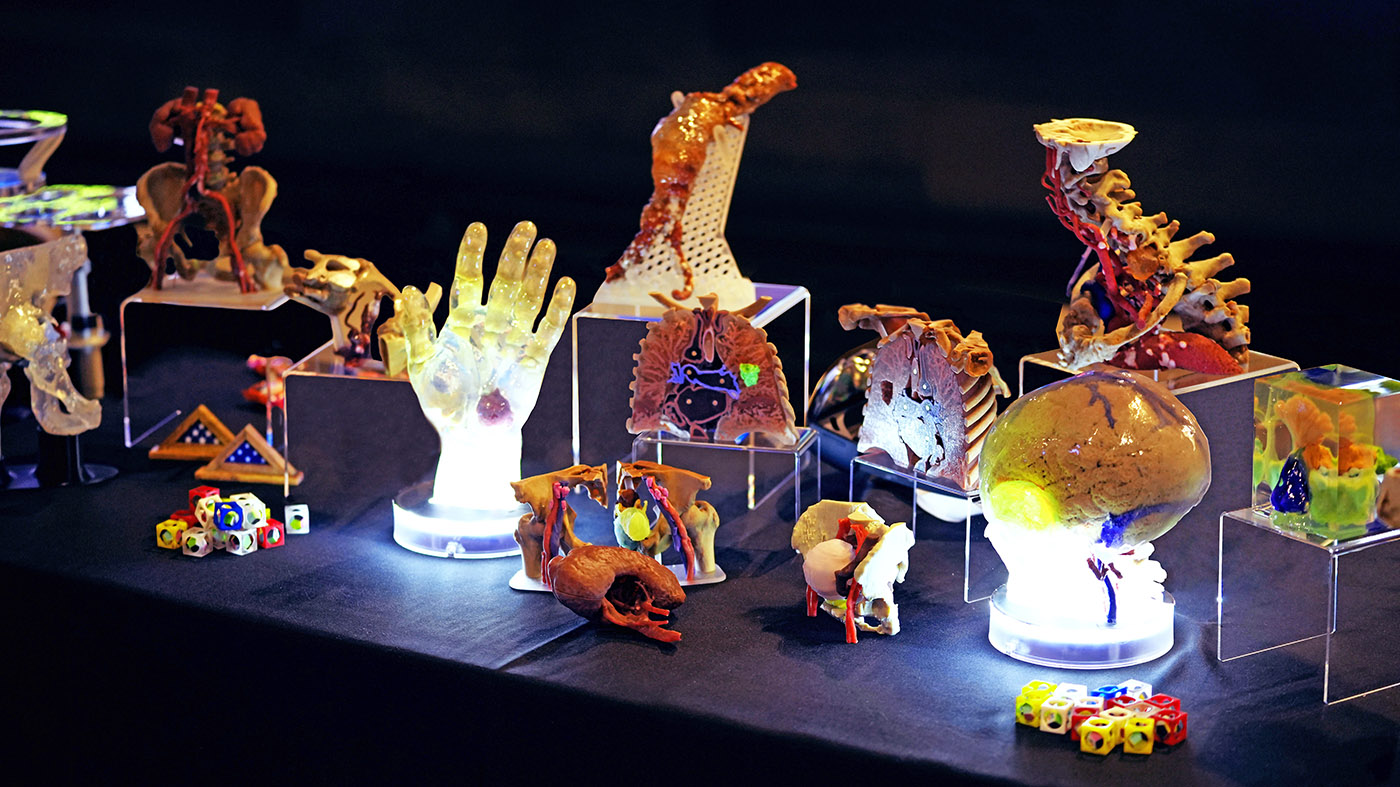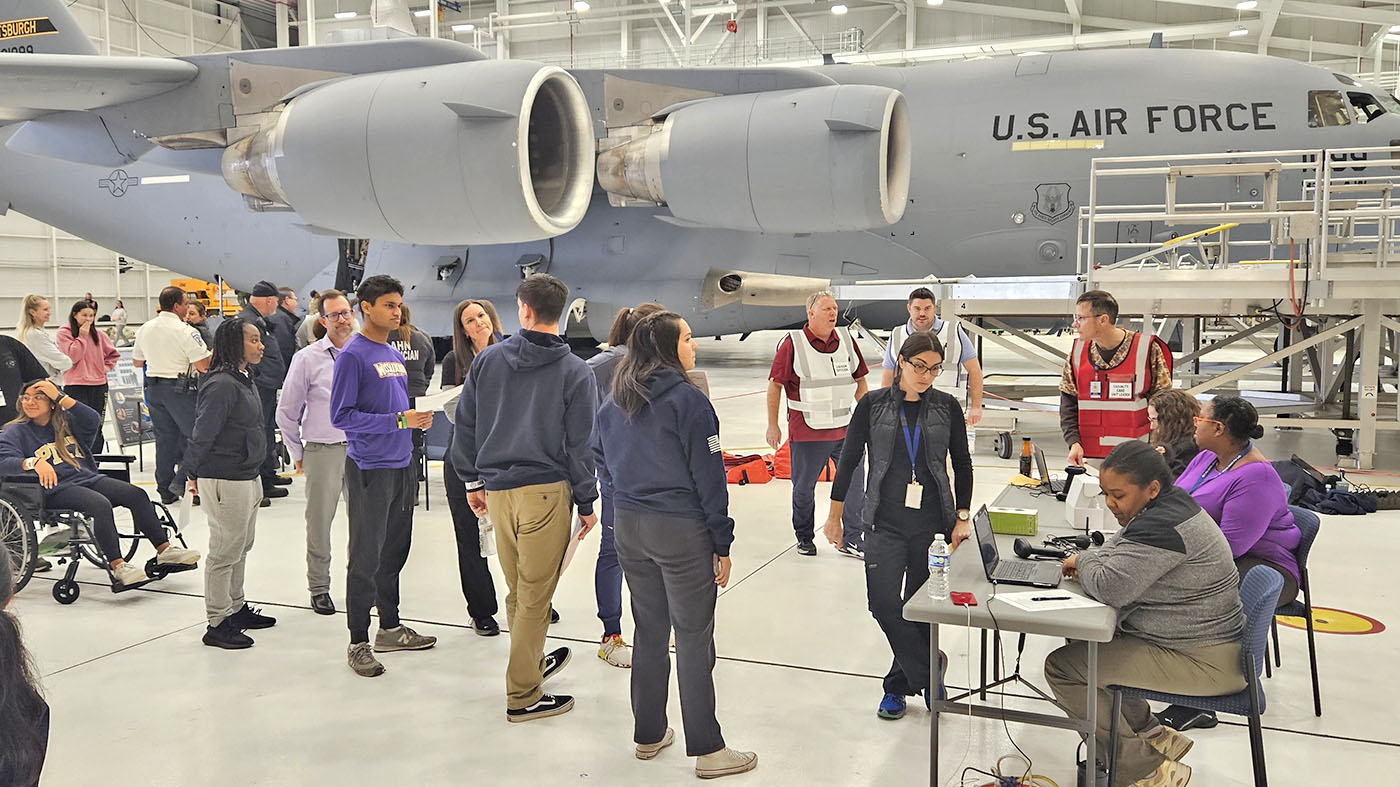In VA health care, continuous innovation is crucial for better Veteran care. The Office of Advanced Manufacturing (OAM) is leading groundbreaking advancements in 3D printing to potentially reduce risks during surgery and save time in the operating room for Veterans.
Dr. Jessie M. Jean-Claude, chief vascular surgeon for Northeast Ohio VA, and Bill Corcuera, site lead for OAM, are using 3D-printed pre-procedural models to provide a tangible guide to assist decision-making during surgery.
“Our product is essentially an anatomically correct 3D-printed model that is patient-specific. The goal is to assist VA surgeons and other medical providers in planning their surgical procedures or interventions,” Corcuera explained.
Helping clinicians plan for challenging procedures
Within the intricacies of surgical planning, every incision must be deliberate and every movement strategic. 3D-printed pre-procedural medical models derived from CT and MRI scans provide surgeons with a hands-on representation of the Veteran’s anatomy before the first scalpel is wielded.
Using a pre-procedural model to help plan each step of the procedure allows surgeons to anticipate challenges, optimize approaches and minimize risks.
Jean-Claude first used these models when facing an unusually challenging procedure—a Veteran with an aneurysm only visible via a CT scan. As she debated the two procedural options, open technique or endovascular graft, she decided to reach out to Corcuera to 3D print a visual aid.
The 3D-printed pre-procedural model provided the answers needed to move forward in the surgical plan. “When he walked into my office with the 3D model, it was a game-changer. The model provided a clear answer, allowing us to proceed with the less invasive endovascular graft, benefiting the Veteran patient with a quicker recovery and fewer complications,” she said.
Fostering informed consent for Veterans
3D-printed pre-procedural models are part of improving the Veteran health care experience. These models give Veteran patients a strong sense of confidence ahead of a surgical procedure. As Jean-Claude described, “Having a visual aid such as putting a 3D model into a Veteran’s hand simplifies what can be a complex and anxiety-inducing situation.”
It also helps their caregivers and family members better understand what to expect during the treatment process. Informed consent isn’t just about signing paperwork, it’s about building a shared understanding that fosters trust and collaboration between Veterans and VA providers. Equipped with these 3D models, surgeons enter the operating room feeling more confident with a clearer surgical plan.
Furthering medical education
The impact of 3D-printed pre-procedural models also extends far beyond the confines of the operating room. It extends into the realm of medical education and training. OAM is creating not only Veteran patient-specific models but also educational ones that can be used indefinitely for training purposes.
These pre-procedural models create a low-risk environment for learning by providing students and other clinicians with lifelike replicas for practice and skill development. Through repeated simulation and hands-on experience, future health care professionals refine their skills, ensuring competence and confidence as they transition into clinical practice.
OAM aims to further streamline the process and expand access to 3D-printed pre-procedural models across all VA medical centers with surgical programs. The goal is to continue refining the technology, making it more accessible to Veterans and ensuring its integration as a standard practice in surgical planning across the VA health care system.
For VA providers interested in requesting a pre-procedural model, please visit OAM’s website.
Topics in this story
More Stories
Theranostics is a specialized field of nuclear medicine that uses a two-pronged approach to diagnose and treat cancer.
Air Force Veteran Shireta Jones overcomes obstacles with support from VA and adaptive devices to continue her passion for pickleball.
Pittsburgh VA and its partners practice relocating hospitalized patients during disasters and public health emergencies.






